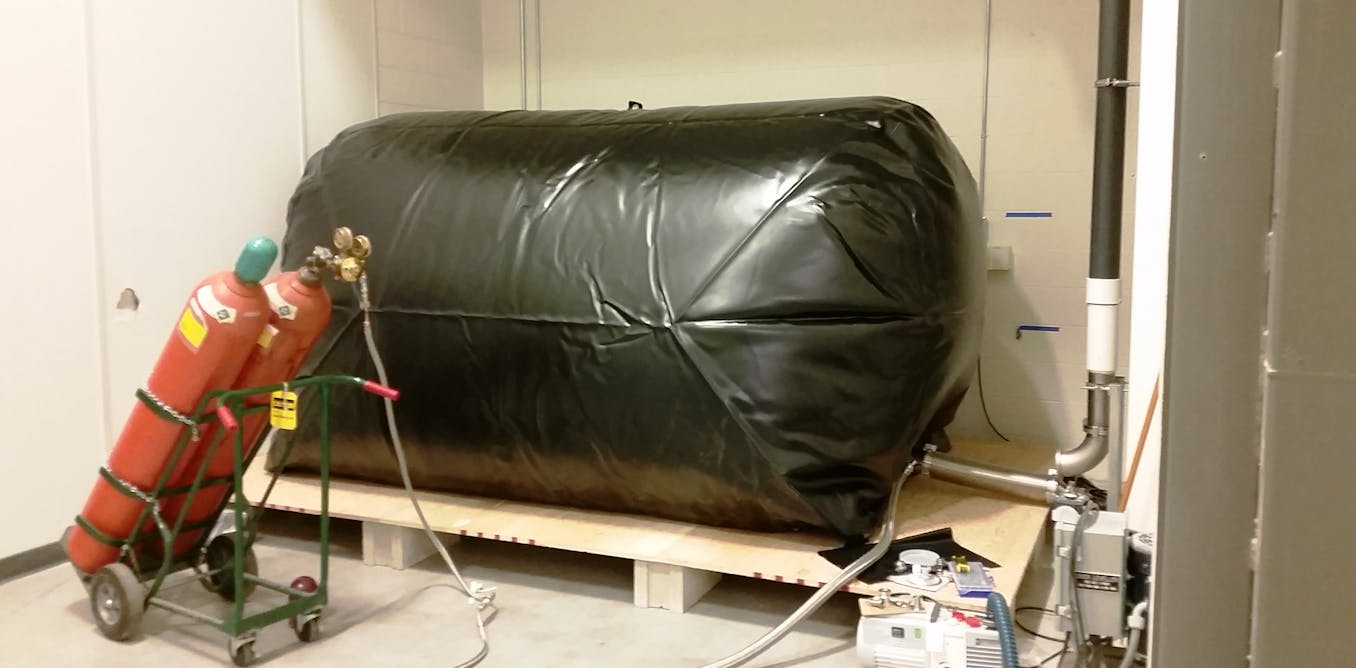I suspect that the frivolousness with which we currently release waste helium will look pretty stupid future generations. Wherever liquid helium is used as a coolant, we should be installing recovery systems to capture and recondense the helium. With the appropriate safety precautions, hydrogen can be used as a lifting gas for blimps and balloons. I can’t think of any applications which require helium to be released into the atmosphere to float away into space forever.
You’re forgetting that the act of science is political, in the sense that science must be conducted under the existing political framework. The very easy solution of recapturing helium is more expensive than just letting it float off.
Good point. I suppose as the supply of helium dwindles, market forces will naturally make recapture systems more economical.
Helium is a byproduct of nuclear fusion, so in 50 years we should be rolling in it…
Good idea but sadly not feasible
Relevant part (credit to [deleted] and u/chiagod):
Assuming D-T fusion, a single fusion event releases a 14.1MeV neutron and a 3.5MeV helium nucleus. Assuming you can absorb all this energy and you’ve got an efficient heat engine setup at around 50%, you’ll get about 1.5x10^-12 J per fusion, so for a 1GW output you’ll need 6.67x10^20 fusions per second. Say you have 1TWe (electric output) worth of fusion reactors worldwide (about half of current electricity generation), then you’re producing 1000 times as much helium, or 6.67x10^23 atoms per second. About a mole each second, or 4 grams. This works out to 126 tons of helium a year, or about 1000m^3 per year of liquid helium. The US strategic helium reserve had a peak volume of about a billion m^3 . World consumption of helium is measured in tens of millions of m^3 per year so you’d be short by several orders of magnitude in the best case.
/s? I feel like that tech has been “20 years away” for like 50 years now…
This graph shows projections for how long it was predicted to take to develop fusion power depending on the funding.

So if a billionaire actually decided to fund it, we might have it? It appears that the actual amount of funding is below the “fusion never” line.
They’d have to throw in like 10 billion a year for over a decade, so we probably need a couple of the worlds richest billionaires
Helium is found adjacent to natural gas deposits which have formed in rock with a high uranium content. Over time, the uranium decays, and helium atoms are part of the result of that decay. Almost all of the world’s helium comes from an area around San Antonio, Texas.
Can we please either stop using floating balloons or replace with hydrogen already, sooo stupid.
Hydrogen balloons are dangerous. I say this as someone who handles them relatively often. One blast can seriously damage your hearing if you are standing next to it. And they explode easily, too.
Fair enough, I stand corrected. Air it is…
Macy’s Thanksgiving Day parade might actually become interesting
Yeah got it, but what if we use it to fill garbage to make it float for a day?
Lithium fission is being explored for subcritical reactors. The fission of lithium ions by bombarding them with neutrons results in excess energy, tritium atoms, and helium atoms.
It would be an amazing thing if widespread energy generation via subcritical fission of lithium also helped solve the “finite helium” problem.
Imagine a world where old lithium batteries can be recycled and create H^3 and He^4 and also generate clean energy.
deleted by creator
I defer to your expertise as I only read an article about Lithium fission and know my knowledge is limited.
deleted by creator
I somehow deleted my comments when I meant to edit them, but I found the article you were talking about. They’re using Lithium-7 and not Lithium-6 it seems. It sounds like they’re proposing on using a radioisotope like americium from a nuclear reactor as their neutron source, which really won’t create a lot of power and doesn’t seem at all economical to me. Otherwise I really don’t see how they’re getting more power out than they put in with something like a particle accelerator.
We can make helium from anything that undergoes beta decay
Beta decay or alpha decay?
Oh wait you’re right, I said the wrong one.






